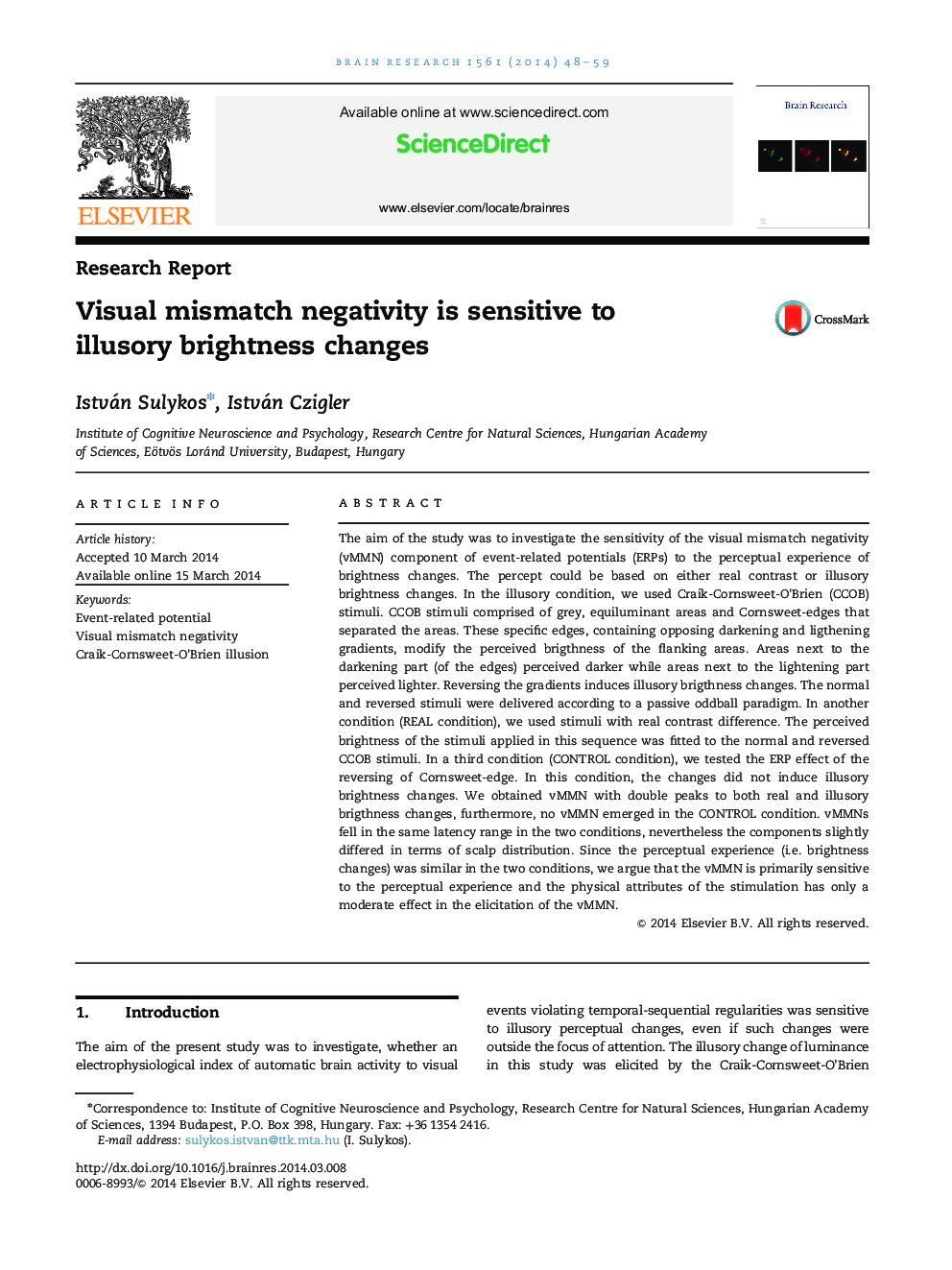| Article ID | Journal | Published Year | Pages | File Type |
|---|---|---|---|---|
| 6263373 | Brain Research | 2014 | 12 Pages |
â¢Illusory and real brightness changes elicit visual mismatch negativity (vMMN).â¢Temporal patterns of the vMMNs were similar: double peak in similar latency ranges.â¢The scalp distribution of the vMMNs were different in both latency ranges.â¢vMMN is primarily sensitive to the perceptual experience.â¢The physical attributes of the stimulation has only a moderate effect on the vMMn.
The aim of the study was to investigate the sensitivity of the visual mismatch negativity (vMMN) component of event-related potentials (ERPs) to the perceptual experience of brightness changes. The percept could be based on either real contrast or illusory brightness changes. In the illusory condition, we used Craik-Cornsweet-O׳Brien (CCOB) stimuli. CCOB stimuli comprised of grey, equiluminant areas and Cornsweet-edges that separated the areas. These specific edges, containing opposing darkening and ligthening gradients, modify the perceived brigthness of the flanking areas. Areas next to the darkening part (of the edges) perceived darker while areas next to the lightening part perceived lighter. Reversing the gradients induces illusory brigthness changes. The normal and reversed stimuli were delivered according to a passive oddball paradigm. In another condition (REAL condition), we used stimuli with real contrast difference. The perceived brightness of the stimuli applied in this sequence was fitted to the normal and reversed CCOB stimuli. In a third condition (CONTROL condition), we tested the ERP effect of the reversing of Cornsweet-edge. In this condition, the changes did not induce illusory brightness changes. We obtained vMMN with double peaks to both real and illusory brigthness changes, furthermore, no vMMN emerged in the CONTROL condition. vMMNs fell in the same latency range in the two conditions, nevertheless the components slightly differed in terms of scalp distribution. Since the perceptual experience (i.e. brightness changes) was similar in the two conditions, we argue that the vMMN is primarily sensitive to the perceptual experience and the physical attributes of the stimulation has only a moderate effect in the elicitation of the vMMN.
